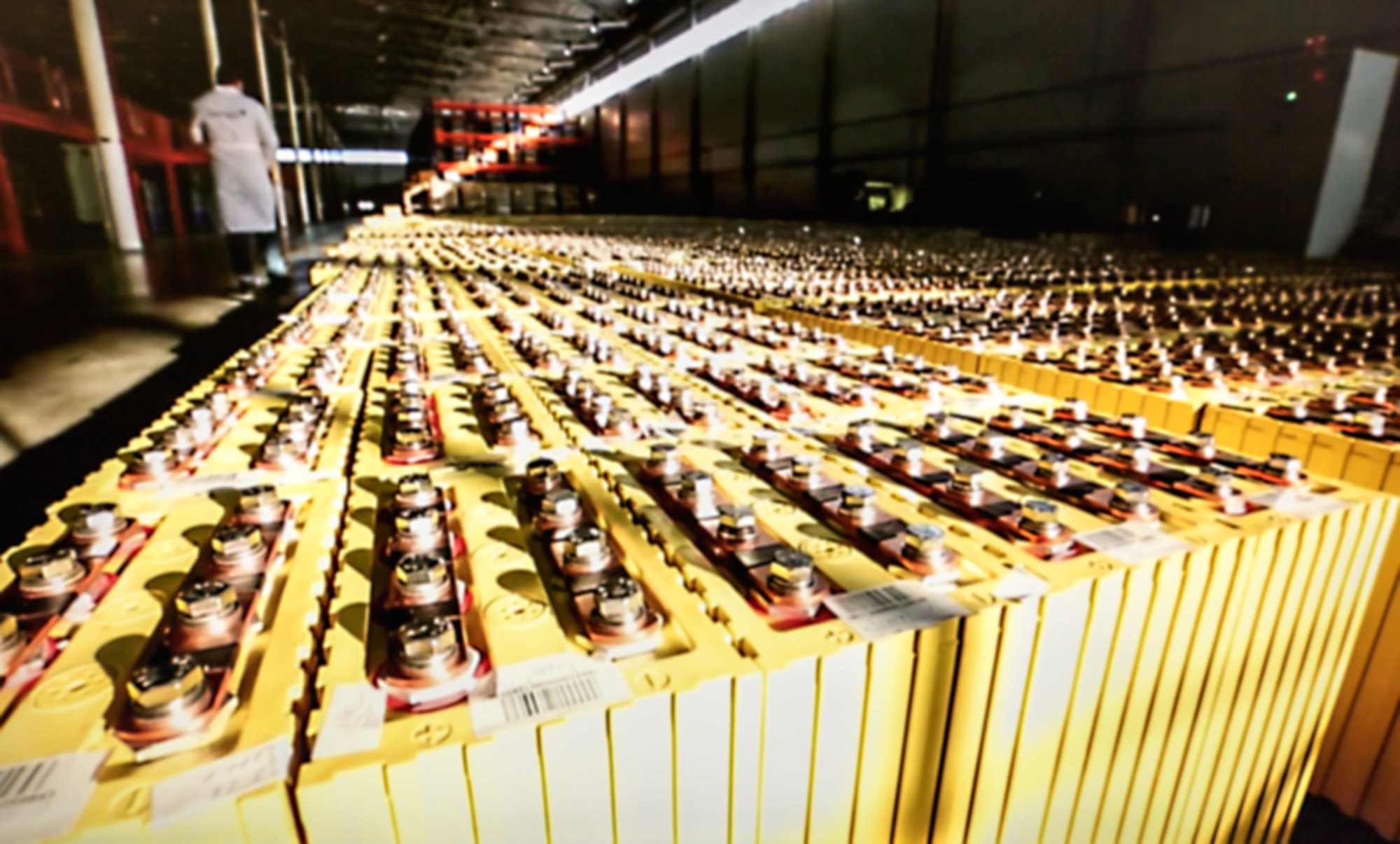Advancements in battery technology—particularly lithium-ion—are critical to ongoing technological and energy transitions. In fact, they fuel everything from the growing prevalence of electric vehicles to the increasing viability of renewable energy usage. That said, the shift toward alternative energy storage is still relatively new. As such, you may not fully understand the lithium-ion battery manufacturing process, and you wouldn’t be alone.
The inherent complexity of battery cell manufacturing, form factors, cell chemistry, and cell formats may seem intimidating. But it’s much easier to comprehend when you break it down into component parts. So, to find out what’s behind the energy storage revolution, let’s walk through each step.
A Look Into the Lithium-Ion Battery Manufacturing Process
The lithium-ion battery manufacturing process is a journey from raw materials to the power sources that energize our daily lives. It begins with the careful preparation of electrodes, constructing the cathode from a lithium compound and the anode from graphite. These components are meticulously coated onto metal foils to set the stage for the battery’s future performance.
Next is the assembly of the battery cell. This includes the strategic placement of the anode, cathode, and a separator within a specially designed casing. It’s an important step, and one that’s responsible for producing different cell formats (also called form factors).
For instance, there are cylindrical, prismatic, or pouch cells. Each is chosen for its specific advantages in energy storage and device compatibility.

Then, the introduction of a liquid electrolyte brings the cell to life. This facilitates the essential flow of ions that powers the battery’s charging and discharging cycles. Manufacturers seal these batteries for integrity and subject them to thorough testing, which primes them for reliability and efficiency.
Following this basic overview, let’s dive into a more nuanced description of each step.
Battery Form Factors
The term “battery form factor” refers to the size, configuration, and arrangement of a battery. Basically, it’s a battery’s physical dimensions and structural design.
This crucial aspect dictates how a battery can be integrated into various devices, from small wearables to large electric vehicles. The uniqueness of the lithium-ion battery manufacturing process for different form factors lies in how these physical characteristics influence its assembly, energy density, and overall performance.
For example, manufacturers favor cylindrical batteries in applications that require durability. Prismatic batteries, with their flat, rectangular shape, are ideal for devices where space is at a premium. And finally, pouch cells, flexible and lightweight, adapt well to thin and irregularly shaped devices.
Each form factor demands a customized manufacturing technique to optimize its distinct advantages: winding for cylindrical cells, stacking for prismatic, and layering for pouch cells. These factors highlight the tailored approach needed to meet diverse energy storage requirements.
Cell Chemistry
Battery cell chemistry helps determine a battery’s capacity, voltage, lifespan, and safety characteristics. The most common cell chemistries are lithium-ion (Li-ion), lithium polymer (LiPo), nickel-metal hydride (NiMH), and lead-acid.
- Li-ion batteries in particular are renowned for their high energy density and long lifespan. Nonetheless, the lithium-ion battery requires precise control over temperature and voltage during manufacturing to ensure safety and performance.
- LiPo batteries, a variant of Li-ion, offer more flexibility in shape and are lighter. As such, they’re well-suited to portable electronics. However, their manufacturing demands careful handling of the polymer electrolyte.
- NiMH batteries are known for their robustness and tolerance to overcharge and discharge. These batteries require a complex electrode fabrication process to optimize their hydrogen-absorbing alloy.
- Lastly, lead-acid batteries are both reliable and cost-effective. That said, because they comprise hazardous materials like lead and sulfuric acid, their manufacturing process emphasizes strict safety protocols.
Each cell chemistry demands specific manufacturing techniques and safety measures, reflecting their diverse properties and applications.
Cell Formats
The manufacturing of lithium-ion batteries differentiates cell formats by their physical shape and construction. Cylindrical, prismatic, and pouch cells each come with their own production advantages and challenges.
Cylindrical cells, recognized by their circular cross-section, are among the oldest and most reliable formats. They’re made by winding electrodes and separator layers into a tight cylinder. This way, manufacturers can automate the process, which facilitates efficient mass production.

Prismatic cells employ a flat, rectangular shape, allowing for effective packing without wasted space. This makes them ideal for mobile phones and laptops. Their production involves stacking layers of electrodes and separators in a hard, protective case. This structure requires precise assembly processes to maximize capacity while ensuring safety and durability.
Pouch cells, with their flexible, lightweight design, lack a rigid outer case. Instead, they use a laminated outer layer that encases the electrodes and electrolyte. This format delivers the most efficient use of space and is easily customizable—properties that are great for thin, portable electronics. At the same time, manufacturing pouch cells demands careful handling to prevent damage to the soft outer layers and to ensure a proper seal against leaks.
In this way, each format’s unique manufacturing process reflects its particular advantages.
Trends in Lithium-Ion Battery Manufacturing
The lithium-ion battery manufacturing process continues to evolve, thanks to advanced production techniques and the integration of renewable energy systems. For instance, while lithium-ion batteries are both sustainable and efficient, companies continue to look at alternatives that could bring greater environmental effects. Examples include sodium-ion, iron-air, zinc-based, and saltwater batteries.
New production techniques like our unique dry electrode process stand to increase efficiency and reduce costs. This process is chemistry-agnostic and requires less space for equipment. It uses 25% less energy, which can reduce your carbon footprint by 9% and the manufacturing footprint by 22%.
Finally, battery recycling initiatives are gaining traction as well. Manufacturers can recover more and more valuable materials from spent batteries, which reduces their overall environmental impact.
Learning More About the Lithium-Ion Battery Manufacturing Process
Once you know a bit more about the lithium-ion battery manufacturing process, it’s easier to choose the type of energy storage that’s best for each use case. After all, fundamental characteristics, such as a battery’s form factors, cell chemistry, and cell formats, all play a role in determining suitability for various applications.
Present-day society relies more and more on the energy stored via advanced battery technology. It’s important to understand how these everyday devices operate—and to get your information directly from the source. Manufacturers such as Dragonfly Energy provide extensive educational materials designed to help you get up to speed with the rapidly evolving sector.
From cutting-edge research to practical applications, Dragonfly Energy provides a comprehensive look at the challenges and innovations shaping the future of power storage solutions.
Read on to learn more about battery manufacturing from Dragonfly Energy.


